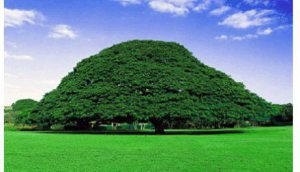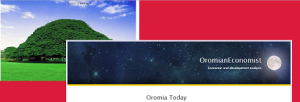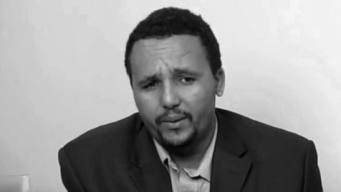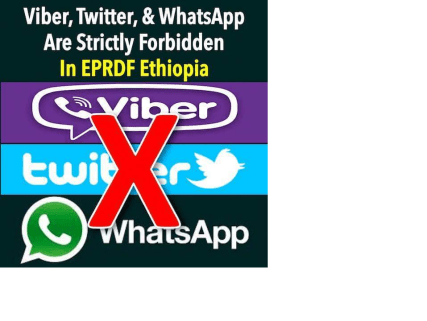Ethiopia: Some 2,000,000 pastoralists and agro pastoralists need emergency food assistance; serious water shortage continues to affect the regions January 3, 2017
Posted by OromianEconomist in Uncategorized.Tags: Africa, Ethiopia, Ethiopia and poverty, Famine, Famine Ethiopia, Why Famine is a Permanent Phenomenon in Ethiopia?
add a comment
UN Office for the Coordination of Humanitarian Affairs: Ethiopia Weekly Humanitarian Bulletin, 02 January 2017
Drought exacerbated by El Niño, combined with extensive flooding, disease outbreaks and the disruption of basic public services, continue to have a negative impact on the lives and livelihoods of 9.7 million Ethiopians. Urgent funding gaps for the response remain across multiple sectors to the end of 2016, notably for response to Acute Watery Diarrhoea (AWD), for interventions in animal health and food assistance. Major funding requirements are already anticipated for early 2017, as there are concerning indications that the current negative Indian Ocean Dipole, may affect water availability, livestock body condition and Meher harvest performance in southern and eastern Ethiopia.
Some 2,000,000 pastoralists and agro pastoralists need emergency food assistance; serious water shortage continues to affect the regions
Oromia: Gaaffii fi deebii RAB Ob. Jawaar Mohaammad woliin goote dhaggeefadhaa January 3, 2017
Posted by OromianEconomist in Uncategorized.Tags: Africa, Jawaar Mohaammad, OMN, Oromia, Oromo, Oromo News, RAB
add a comment
Violence Against Free Media and Knowledge Dissemination in Ethiopia: An Analysis of the Mechanisms of Restrictions on Information Flow January 3, 2017
Posted by OromianEconomist in #OromoProtests, Human Rights.Tags: #OromoProtests, Africa, Enemies of Press Freedom, Ethiopia, Facebook and WhatsApp Are strictly forbidden in Fascist regime (TPLF/ EPRDF) Ethiopia, Genocide Against Oromo People, Human rights, Internet Freedom, Oromia, Oromo
add a comment
Violence Against Free Media and Knowledge Dissemination in Ethiopia: An Analysis of the Mechanisms of Restrictions on Information Flow
By Habtamu Dugo, Visiting Professor of Communications,
University of the District of Columbia
hab.dugo@gmail.com
Abstract
This article examines multiple mechanisms the Ethiopian state has been using to implement information blackout throughout the country in order to distort, misrepresent, hide and deny massive human rights infractions perpetrated by the military against citizens demanding self-government, basic rights and justice across Oromia state and Ethiopia. The data for this research were obtained through multiple research approaches, which included reviewing three relevant Ethiopian laws that justify information blackout; reviewing reports by human rights organizations; reviewing news stories on the topic in multiple languages; and reviewing audio-visual materials containing press releases from Ethiopian authorities. The study finds that the Ethiopian government has used a mixture of mechanisms to restrict the free flow of information by: introducing a slew of draconian proclamations, resorting to suppressing and removing communications applications and hardware and engaging in robust local and global misinformation and denial campaigns in times of unprecedented domestic political upheavals.
Key words: press freedom, freedom of speech, media control, social media control, information blackout, state-led violence, Oromo, Ethiopia, East Africa, Horn of Africa.
Introduction
In the summer of 2014 Ethiopian government police, security forces and commando units shot live ammunitions into crowds of peaceful protesters killing at least 100 (OP, 2014). The protesters were opposed to a city planning scheme known as the Addis Ababa Integrated Development Master Plan (IDMP). By the time this plan was released, Addis Ababa’s expansion had already displaced 150, 000 families of Oromo farmers and was set to displace millions more across Oromia (Legesse, 2014).
Demonstrators demanded that the IDMP be halted immediately and the Oromo people’s constitutional right to self-rule be respected. The Ethiopian government did not respond to the popular demands. Instead, authorities promised massive violence against civilians in an attempt to continue the implementation of the draconian plan (Biyyaa, 2014), characterized by the Oromo as “master killer.”
In a compressive study released in 2014, Amnesty International (2014) reported that between 2011 and 2015, “at least 5000 Oromos have been arrested based on their actual or suspected peaceful opposition to the government.” The popular understanding of the IDRP among the Oromo is that it will continue to uproot millions of Oromo farmers from their land and lead to the eventual splitting of Oromia into two halves—the east and the west. This will separate the Oromo people who share the same language, identity and a regional state from each other. Even families would be separated as they have been in North and South Korea.
None of the perpetrators of the April and May 2014 massacres were brought to justice nor was there an independent investigation into the mass killings by government security. Instead,some government officials such as Abay Tsehaye, the former Minister of Federal Affairs, threatened to take more actions against anyone who is opposed to the plan (OMN, 2014).
Oromia-wide protests against the IDMP recurred in mid-November 2015 in small town west of the capital city “when the government transferred the ownership of a school playground and a stadium to private investors, in addition to clearing the Chilimo natural forest to also make way for investors,” (AI, 2015). In just over a few weeks, the protests spread to all parts of Oromia, involving people from all walks of life. The government responded with lethal force which resulted in the death of more than 200 people, including children, women and the elderly (HRLHA, 2015). Thousands of Oromos were wholesale labeled as “terrorists”, giving a blank check to government officials and commanders of the security forces to act with impunity. Hundreds were killed, thousands maimed and several thousand imprisoned. The government placed a ban on domestic and international human rights organizations, media, journalists, bloggers and citizen journalists to cover up the use of lethal force to suppress the protests and the staggering number of casualties.
Human Rights Watch noted the government’s tight chokehold on information as follows: “Ethiopia’s pervasive restrictions on independent civil society and media mean that very little information is coming from affected areas although social media are filled with photos and videos of the protests,” (HRW, 2016). This has left the global community in the dark about the real magnitude of the crimes security forces have committed. This paper analyzes the different facets of the Ethiopian government’s restrictions on information flow focusing on actions taken during the Oromo protests of 2015-16.
I contend that the government’s endeavors to create an information blackout was designed to avoid responsibility for the mass killings, maiming, detentions, rape and other crimes that the federal police, the Agazi Special Forces, and other state security units have committed against unarmed Oromo civilians. The study also reveals that the government has used a number of ‘legal’ and coercive strategies and tactics to exercise monopolistic control over information.
Disinformation
One of the ways in which the government uses to conceal its atrocities is the state-controlled media and crackdown on alternative media. With near monopoly on media outlets in the country, top government officials appear on state-controlled television (formerly ETV) and make statements that cannot stand to simply scrutiny. On December 15, 2015, for instance, Prime Minister Hailemariam Desalegn threatened to take “merciless actions” against Oromo protestors whom he labeled “terrorists,” “anti-peace forces” and “destabilizing “forces”. He indicated that the government’s Anti-Terror Task Force will take swift measures to restore order. While the security forces have indeed carried out the orders, the purpose of the threats was to cow people into submission. In other words, the media is used to carry out disinformation battles that parallel the real actions.
violence-against-free-media-and-knowledge-click-here-to-read-in-pdf






You must be logged in to post a comment.